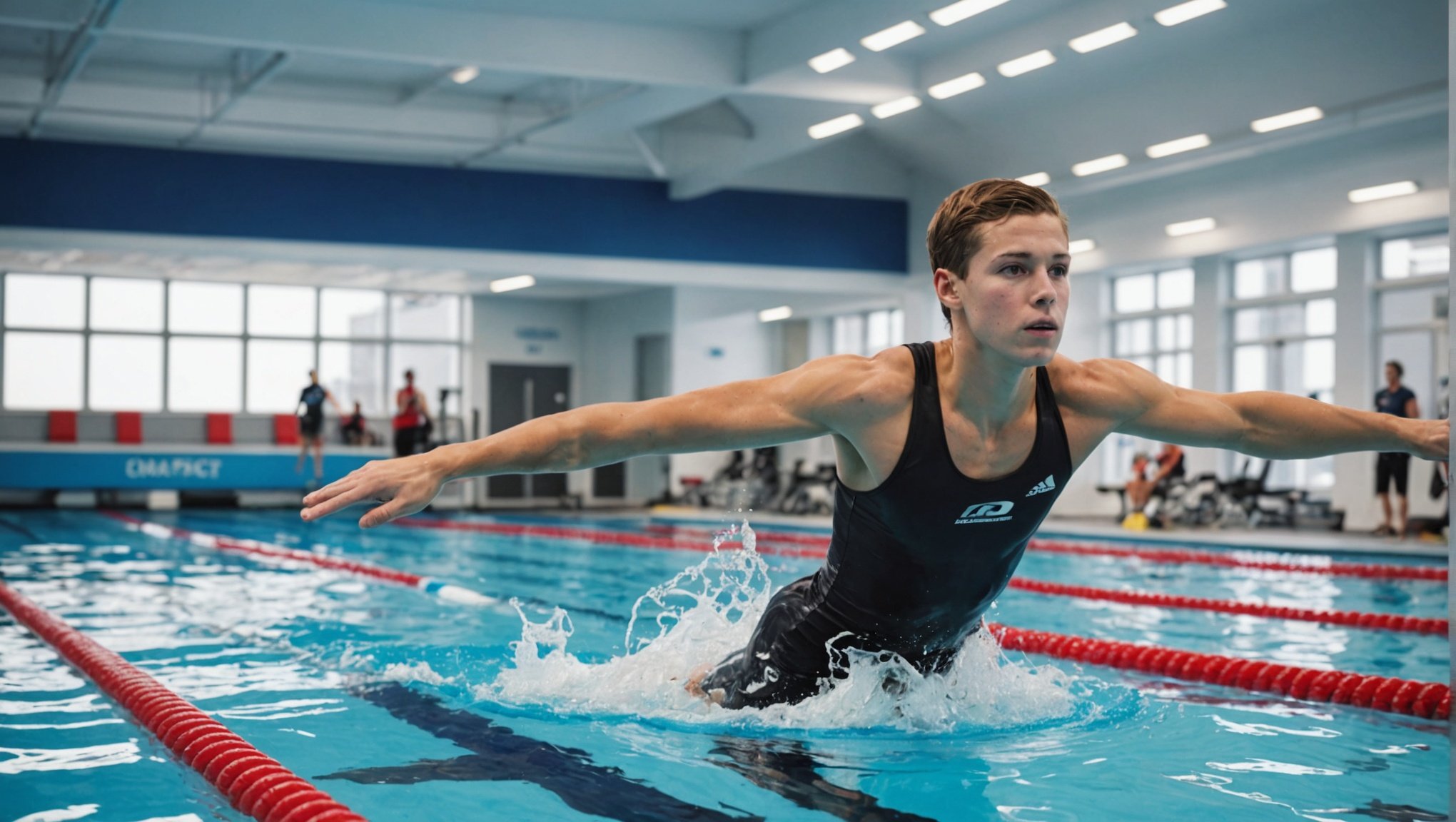Cardiovascular fitness is essential for the overall health of UK teens, yet many struggle to achieve optimal levels. Aerobic swimming drills present a compelling solution, offering not only an engaging way to exercise but also significant benefits for heart health. By exploring the unique impact of these drills, we’ll uncover how integrating swimming into fitness routines can boost endurance and well-being among teenagers, ensuring they thrive physically and mentally. Dive into the transformative power of swimming and discover practical ways to enhance cardiovascular fitness for a healthier future.
The Importance of Cardiovascular Fitness for UK Teens
Cardiovascular fitness is crucial for teenagers, impacting both their physical and mental well-being. In the UK, where sedentary lifestyles are becoming more common, understanding the importance for teens to maintain cardiovascular fitness is vital. This type of fitness involves the efficient functioning of the heart, lungs, and blood vessels, enabling the body to sustain physical activity for longer periods.
Also to see : Is Intermittent Fasting Safe for Managing Type 2 Diabetes in the UK?
For teenagers, the health benefits of improved cardiovascular fitness are extensive. They include enhanced endurance, better weight management, and reduced risk of developing chronic diseases like diabetes and hypertension. Moreover, it can boost mental health by reducing symptoms of anxiety and depression, thus improving overall mood and cognitive function.
Current statistics indicate a worrying trend in the cardiovascular health of UK teenagers. According to recent studies, a significant number of teens are not meeting the recommended levels of physical activity, which can lead to poor cardiovascular health outcomes later in life. By prioritising cardiovascular fitness, teenagers can lay the foundation for a healthier future. Encouraging regular exercise, such as running, cycling, or swimming, can significantly improve cardiovascular fitness and contribute to a more active lifestyle.
Also to discover : How to Choose the Right Type of Yoga for Your Fitness Goals in the UK?
Aerobic Swimming and Its Benefits
Aerobic swimming is a highly effective form of exercise that significantly enhances cardiovascular health. It involves continuous, rhythmic movements that increase the heart rate and improve the efficiency of the heart, lungs, and circulatory system. Unlike high-intensity workouts, aerobic swimming is performed at a steady pace, making it an ideal cardiovascular workout for teenagers.
Comparative Analysis: Swimming vs Other Aerobic Exercises
When compared to other forms of aerobic exercise, swimming offers unique benefits. It is a low-impact activity, which reduces the risk of injury, making it suitable for teens of all fitness levels. While running and cycling are excellent cardiovascular exercises, swimming provides a full-body workout, engaging multiple muscle groups simultaneously. This comprehensive engagement not only boosts endurance but also enhances overall strength and flexibility.
Long-Term Effects on Teen Fitness
Regular aerobic swimming can have profound long-term effects on teen fitness. It aids in maintaining a healthy weight, improves lung capacity, and strengthens the heart. Additionally, the benefits of swimming extend beyond physical health. Engaging in this activity can also improve mental well-being by reducing stress and anxiety levels. By incorporating aerobic swimming into their routine, teenagers can enjoy a healthier, more active lifestyle.
Effective Aerobic Swimming Drills for Teens
Incorporating structured swimming drills into teen workout plans can significantly enhance cardiovascular fitness. These drills are designed to improve endurance, strength, and overall performance in the water.
Warm-Up Drills
Before engaging in intense aerobic exercises, it’s crucial for teens to start with warm-up drills. These routines gradually increase heart rate and prepare muscles for the main workout. Effective warm-up drills include:
- Arm Circles: Enhance shoulder flexibility and mobility.
- Leg Swings: Boost hip flexibility and prepare the lower body.
- Gentle Laps: Swim at a slow pace to acclimate to the water.
Main Workout Drills
The core of any aerobic swimming session involves main workout drills that focus on cardiovascular fitness. These drills include:
- Interval Training: Alternating between fast and slow laps to build endurance.
- Kick Drills: Using a kickboard to strengthen leg muscles.
- Pull Drills: Using a pull buoy to focus on arm strength and technique.
Cool-Down Drills
Completing a session with cool-down drills is essential to prevent injuries and aid recovery. These exercises help in reducing heart rate and relaxing muscles:
- Gentle Backstroke: A slow-paced stroke to ease tension.
- Stretching: Focus on major muscle groups to enhance flexibility.
Integrating Swimming into a Regular Fitness Routine
Incorporating swimming into a fitness routine can be both rewarding and effective for teenagers. To seamlessly integrate this activity, consider scheduling swimming sessions at consistent times each week, such as after school or during weekends. This regularity helps establish a habit, making swimming a natural part of the weekly schedule.
Balancing swimming with other physical activities is crucial for achieving overall fitness. Encourage teens to diversify their workouts by combining swimming with activities like jogging, cycling, or team sports. This variety not only enhances different muscle groups but also keeps the routine engaging and less monotonous.
Motivating teens to maintain a consistent swimming routine can be challenging yet achievable. Set achievable goals, such as improving lap times or mastering new strokes, to keep them engaged. Additionally, swimming with friends or joining a swim club can add a social element, making the activity more enjoyable.
To further encourage regular swimming, highlight the benefits such as improved cardiovascular fitness, increased strength, and better mental well-being. By integrating swimming into a broader fitness routine, teens can enjoy a balanced and active lifestyle, contributing to their overall health and well-being.
Expert Insights and Testimonials
Understanding the benefits of swimming from expert opinions and real-life experiences can greatly influence teenagers’ fitness choices. Swimming coaches, with their extensive knowledge, often highlight how aerobic drills enhance cardiovascular health and overall endurance. They emphasise that consistent practice not only builds stamina but also improves coordination and flexibility.
Health professionals provide valuable insights into current teen fitness trends. They note a growing concern over sedentary lifestyles and advocate for swimming as an effective remedy. According to these experts, incorporating swimming into regular routines can combat inactivity, contributing to healthier and more active lifestyles for teenagers. They stress the importance of starting early to instil lifelong fitness habits.
Testimonials from teens who have embraced swimming reveal its transformative impact. Many report significant improvements in both physical and mental health. One teen shared how regular swimming sessions helped reduce stress and anxiety, while another highlighted increased strength and confidence. These personal stories serve as powerful motivators for peers considering swimming for fitness.
By integrating expert opinions and real-life testimonials, we can better understand the profound benefits swimming offers. This comprehensive perspective encourages teens to explore swimming as a viable and enjoyable path to improved health.
Case Studies and Research Findings
Research studies consistently highlight the effectiveness of swimming in enhancing cardiovascular health, particularly among teenagers. A notable study conducted by the University of Birmingham examined a group of adolescents who engaged in regular swimming sessions over six months. The findings revealed significant improvements in their cardiovascular endurance, lung capacity, and overall fitness levels. Such studies underscore swimming’s potential as a powerful tool in promoting teen health.
In addition to academic research, several case studies have documented the success of teen swimming programs across the UK. For instance, a program in Manchester saw a 30% increase in physical activity levels among participants, leading to better health outcomes and increased enthusiasm for fitness. These programs often incorporate structured swimming drills and encourage peer support, which play crucial roles in maintaining high participation rates.
The implications of these research findings are profound for teen fitness initiatives. By integrating swimming into school curriculums and community programs, there is an opportunity to address the growing concerns of sedentary lifestyles among youth. Encouraging swimming not only supports physical health but also fosters a lifelong appreciation for fitness, setting a strong foundation for healthier futures.











